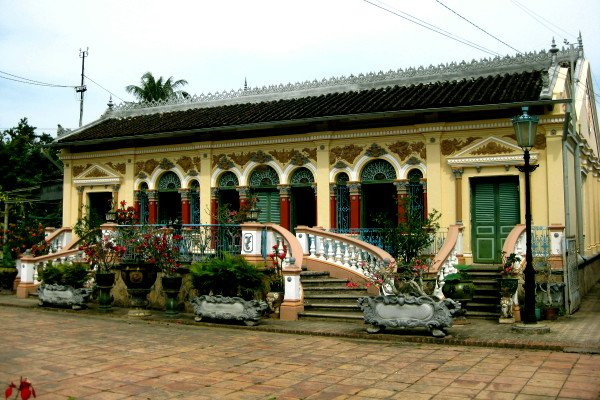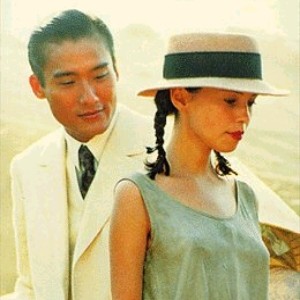Bin Thuy’s House of Ancient Beauty

“The Lover” is a film about 30 years old about a Chinese man (played by Tony Leung Ka-fai) and a French girl (played by Jane March) who fell in love in Vietnam in the 1920s. Jean Jacques Annaud, a Frenchman himself, directed the film and in his travels in search of scenes for the movie, he came upon the southern city of Can Tho wherein he discovered and was mesmerized by the ancient beauty of the house of Bin Thuy that he knew right then and there it had to be a part of the movie. In fact, the house was so stunning that some (or many) of the people who saw the movie actually traveled to the place to see the ancient beauty with their own eyes.
And for those who have seen the house for themselves, they would even be delighted to discover that the house is even more beautiful up close than in the movies. Although built already 140 years ago, the structure retained the beauty of its East-West architecture, a contrasting feature which got the French director’s attention and interest in the first place. The outside appearance of the house is French-designed, while the interior design is authentic Vietnamese.
Inside, there is a huge historical altar lacquered in red and trimmed with gold as the centerpiece of the house. The furniture is made of antique wood, and everything else in the house is antique including kitchen wares such as wash basins and jars. But the center of interest and perhaps wonder in the house is its collection of ancient items that have been carefully preserved for generations. For instance, the hanging lamps date as far back as the 19th century. A round marble table has been around since the 18th century, while a set of French tables and chairs can be traced back to the ancient times of the 17th century, when King Louis XIV ruled the kingdom.
The famous Bin Thuy house can be found in Bui Huu Nghia Street, Binh Thuy District, 5 kilometers from Can Tho. It was built in 1870 by the Duong family who arrived in the southern region of Vietnam in the late 19th century. It has a land area of 300 square meters. Duong Chan Hien is the original owner the house. He is the grandson of Duong Chan Ky, a landlord who was also a developer in the 20th century. Ngo Thi Ngoc Lien is an old woman who is presently the caretaker of the house and according to her, during the French colonialization, the family was forced to leave the house when the whole region was occupied. In fact, soldiers occupied the house as well and lived there for years.
Antique collectors keep coming back to the house to ask and convince the Duong family to sell their ancient treasure. But many times too, the family refused, even during hard times when they needed money. To them, the house has become like a witness and even companion to the rise and fall of the Duong family through Vietnam’s turbulent history. Today, during anniversaries and other special occasions, the house transforms into like a house of worship and gathering wherein descendants of the Duong family come together to commemorate their ancestors. The rest of the year, the house is open to visitors.
Because of the success and worldwide recognition of the Bin Thuy House from the movie “The Lover,” many other directors followed suit and shot scenes of or their whole movies themselves in Bin Thuy. Thus, the house has also appeared in movies such as Chan Troi Noi Ay (“The Distant Horizon”), Nhung Neo Duong Phu Sa (“The Silt Ways”), and Cay Tre Tram Dot (“The Hundred-Knot Bamboo Tree”). Moreover, since 2009, the Ministry of Culture, Sports and Tourism has named the Bin Thuy house as a “National Relic for Architectural Arts.”
While the Bin Thuy house has definitely received global recognition, family members and the government itself are in continuing efforts to preserve the ancient structure and beauty of the abode while making it available to the public.










